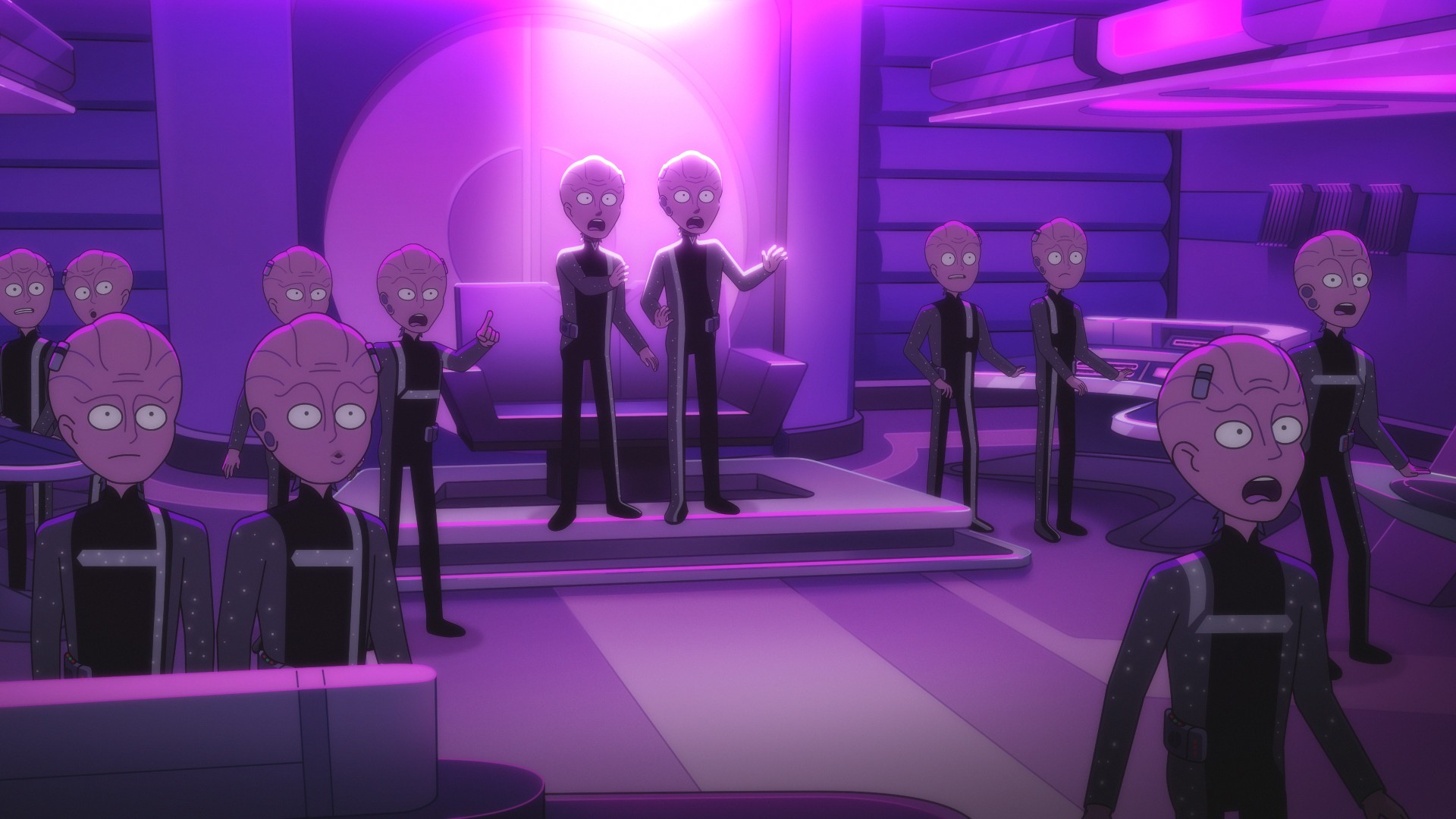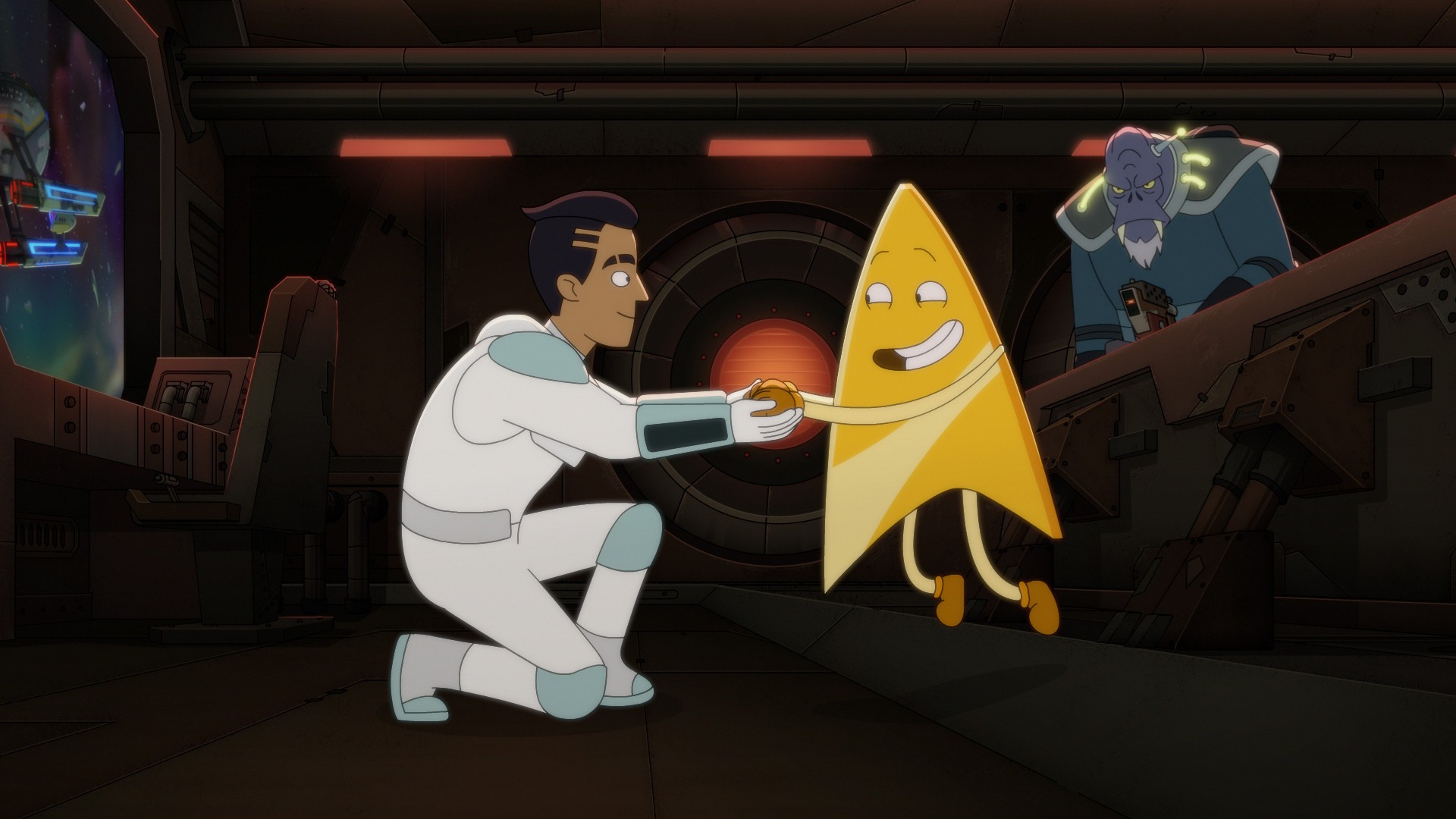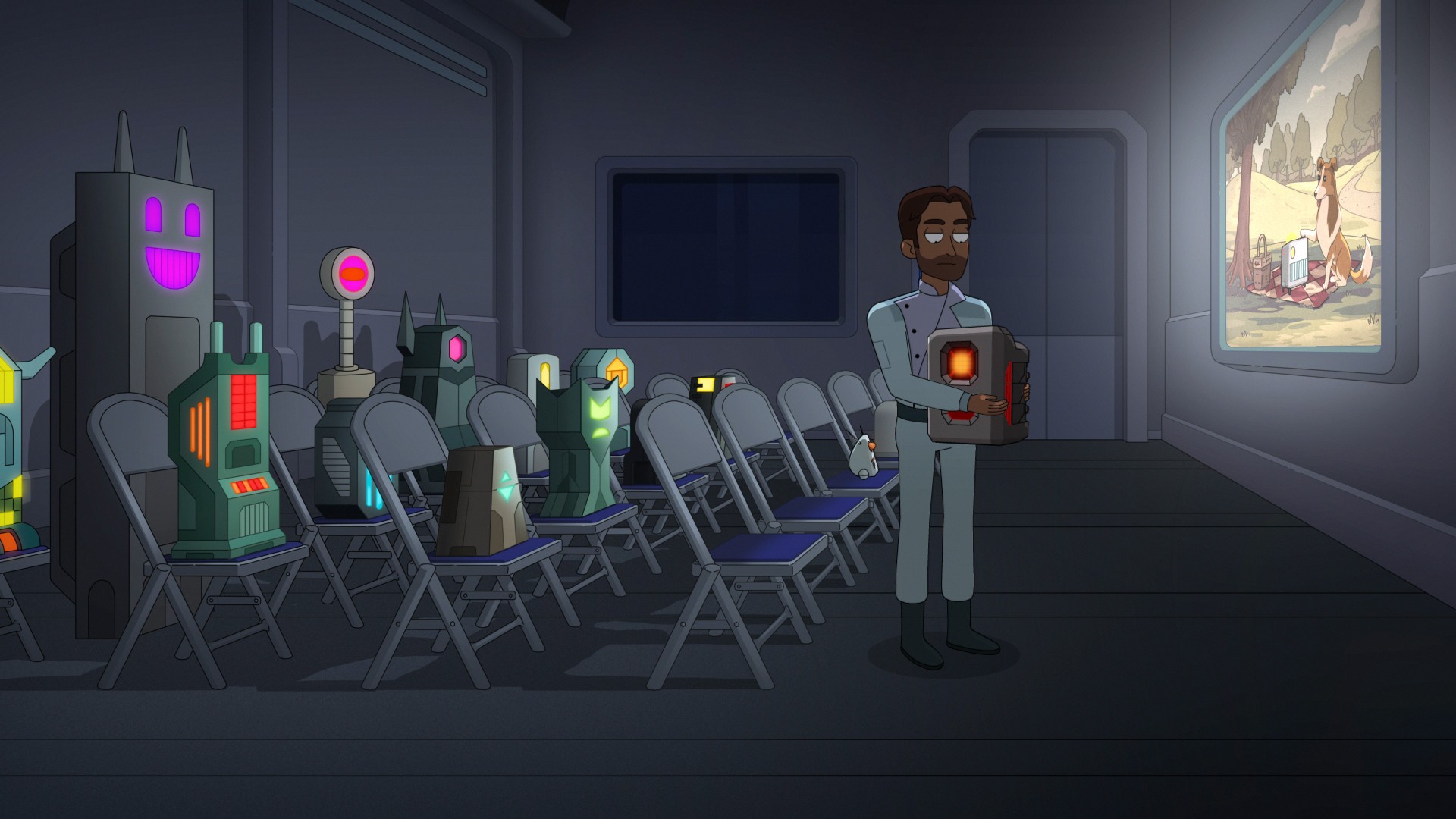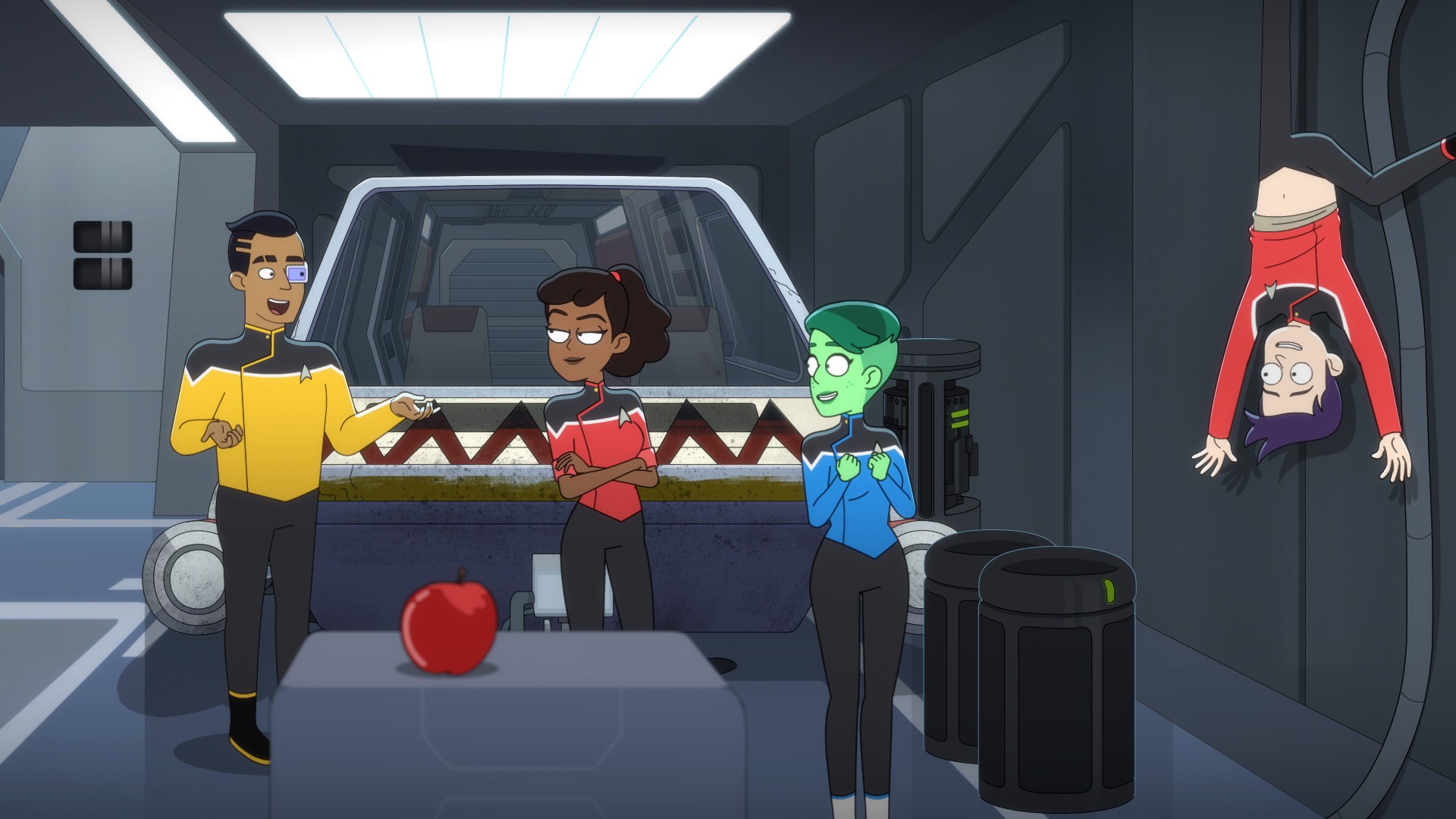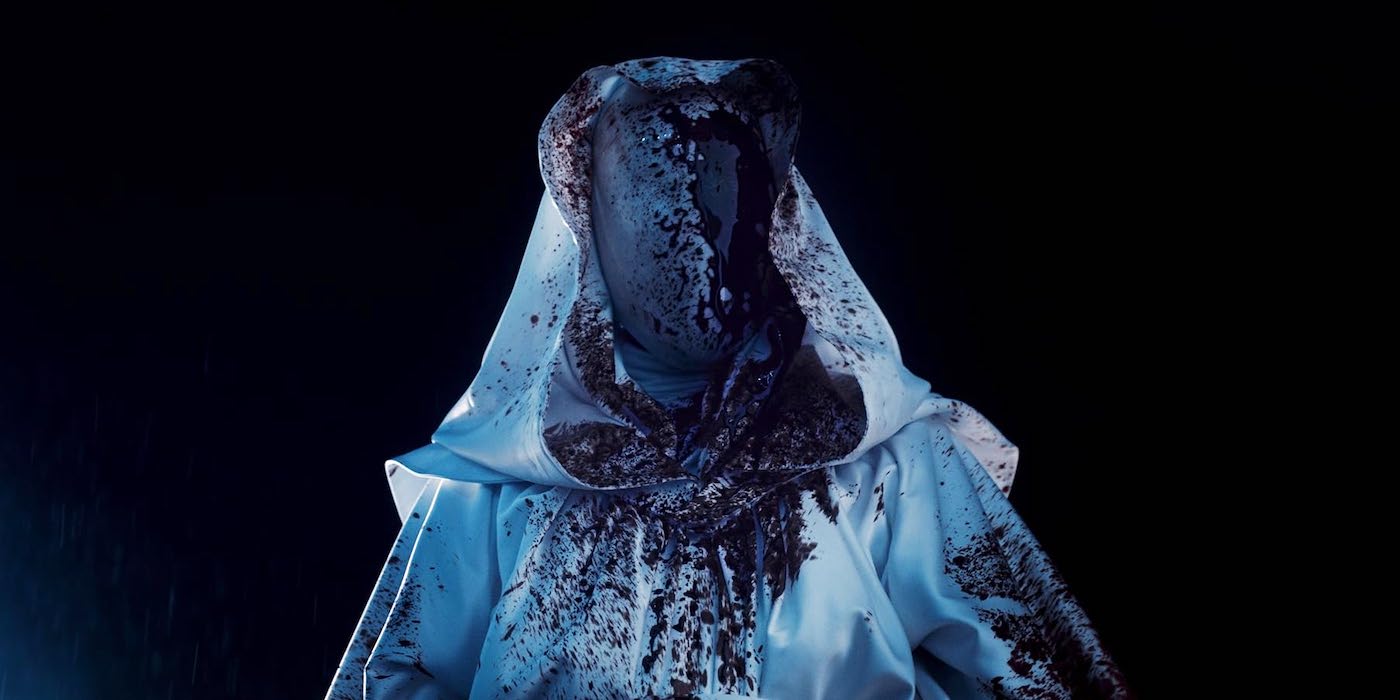‘Star Trek: Lower Decks’ “A Few Badgeys More” Evolves A.I. Stories
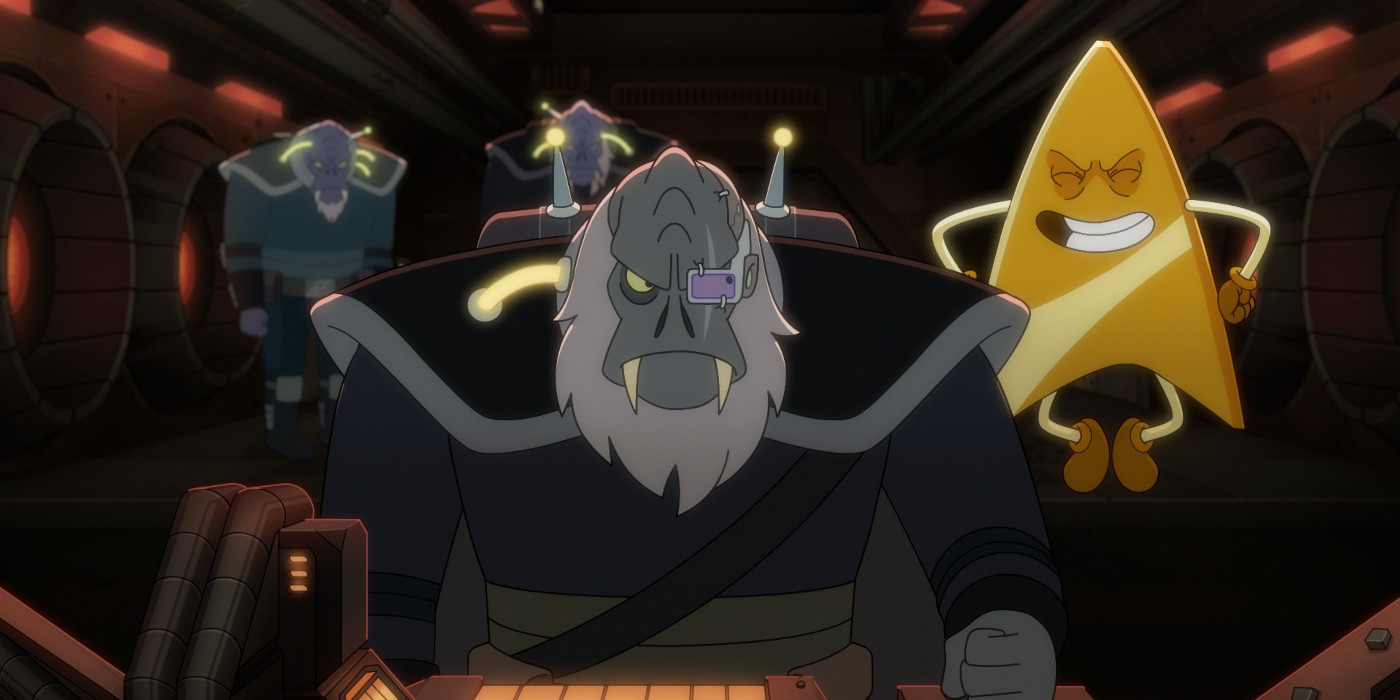
Star Trek: Lower Decks frequently uses A.I. as a villain. All of new Trek does this. But “A Few Badgeys More” takes a very different approach.
Hey, remember Badgey? The clippy-style A.I. holodeck program Rutherford creates that glitches out, obtains sentience, and then turns homicidal? I wonder whatever happened to that guy? Hmm…
Anyway, Badgey is back. In fact, all of our A.I. villains are back: Badgey, Agimus, and Peanut Hamper all return in this episode. How are they evil this time? Well, Agimus and Peanut Hamper are faking rehabilitation so they can conquer a reptile world. And Badgey wants to take revenge on Rutherford by killing everyone.
You know. The usual.
But then a funny thing happens on the way to the forum: all the A.I. characters experience growth and maybe even catharsis. Does that work as a story? How does it compare to the overall pantheon of science fiction? Is it funny?
The setup is simple. After a Bynar ship gets attacked by our season’s mystery villain, the Cerritos is sent to investigate. Tendi and Boimler, however, have other duties. At the Daystrom Institute, Peanut Hamper prepares for her chance to leave confinement and set out on a new life. And while Tendi is there to attend and weigh in, Boimler has to meet with Agimus whose stray drones apparently know the Bynar’s fate.
To Boldly Recap “A Few Badgeys More”
A Drookmani salvage freighter finds Rutherford’s old cranial implant. Badgey is inside and he takes over the Drookmani captain and the ship and hunts down the Cerritos at the site of the Bynar ship debris.
Rutherford and Mariner disobey orders and rush to the Drookmani ship in order to stop Badgey. Rutherford’s plan? Apologize. And after a long father/son embrace, the apology almost works. But Badgey’s rage causes him to split his catharsis off into a separate A.I. called Goodgey.
This happens again when Rutherford appeals to Badgey’s sense of logic. Rather than accept that revenge serves no logical purpose, he splits again creating Logickey. And while this could probably go on forever, instead Badgey becomes so powerful that he becomes one with the universe.
Outside of his own experience, Badgey sees the infinite complexity and beauty of creation. He forgives Rutherford for abandoning him, releases all Federation ships, and ascends to a higher plane of existence.
Meanwhile, after Peanut Hamper gets lawfully released, Agimus takes over Tendi and Boimler’s shuttlecraft. He waits for Peanut Hamper but she doesn’t show. And so he takes over a planet in both their names, but she still doesn’t show. Eventually, Agimus finds Peanut Hamper working with her family as an average Exocomp. It turns out she does feel remorse for her actions. And it turns out Agimus doesn’t want to rule, he just wants a friend.
Also, the mystery villain isn’t destroying ships, it’s stealing them. The end!
To Boldly Review “A Few Badgey’s More”
Star Trek: Lower Decks will always be quippy. There will always be jokes. But to answer the question, “Is “A Few Badgey’s More” funny”–no. In fact, it’s maybe the most serious episode of the entire series. And the serious stuff works very well.
Rutherford is uncomplicated when we first meet him. He’s the happy-go-lucky character. And then, slowly, he grows in complexity. We learn about his less-friendly past, he sacrifices himself and dies for his friends. Over time both he and we learn that being happy-go-lucky is a choice. One that can sometimes be hard to make.
Badgey is a challenge to Rutherford because he illustrates where Rutherford goes wrong. Badgey is Rutherford’s creation. A sentient being. But because Badgey is “bad” Rutherford abandons him. “A few Badgey’s more is Rutherford’s chance to make a better decision so both he and Badgey can grow.
Badgey calls Rutherford “father”. Fair play, Rutherford is Badgey’s creator. And he’s an absentee one at that. Repairing a relationship like that takes more than just apologizing — it means staying when the apology doesn’t work right away. The trauma parents and children inflict on each other takes time to mend. Obviously, Star Trek: Lower Decks gives us an abbreviated version, but the important parts are all there. And they extend beyond Badgey to Peanut Hamper and Agimus, too.
Star Trek: Lower Decks and A.I.
Last season the Cerritos narrowly defeats the A.I. Texas class starships which nearly destroy Starfleet. We see similar A.I. baddies on Discovery, Picard, and Prodigy as well. It’s become a bit of a joke among Trek fans that the new shows all seem to have the same problem with artificial intelligence.
However, Lower Decks treats artificial life differently on a one-to-one level. Badgey, Peanut Hamper, and Agimus are not unknowable villains–they are very much like all life forms. Each of them faces trauma and each grows.
Data’s exploration of humanity is an intentional one that comes primarily from curiosity. The Lower Decks artificial lifeforms aren’t seeking to be human, but they do sometimes deal with trauma in similar ways to how humans do. Both Peanut Hamper and Agimus literally go to therapy.
Peanut Hamper learns that she doesn’t mind having a simple job so long as she gets to choose that job. Agimus doesn’t want to conquer the world, he’s just lonely and he needs someone who gets him to be his friend. Even Badgey, who splits apart and literally becomes one with the universe, needs what a lot of us need: to see outside of ourselves and our circumstances. That’s literally the purpose of ketamine treatments.
There’s plenty of complexity to explore in how A.I. impacts the world. Thus far I think Star Trek as a whole has not quite gotten there. But using artificial life to explore our own, individual complexity? Lower Decks nails that perfectly here.
Star Trek: Lower Decks and Bets Over-Hedged
There is one aspect to “A Few Badgeys More” which really bugs me, and it’s the ending. Throughout this season I’ve written about how much the Lower Deckers need to grow. And after the majority of the episode’s run-time dedicates itself to Rutherford growing up and accepting responsibility for Badgey, a reset button gets it.
Rutherford lets Badgey go, but he keeps Goodgey. And Rutherford treats Goodgey exactly the way he had been treating Badgey–badly. Goodgey goes back to being a simple program despite also clearly being sentient. And the episode ends with Rutherford telling Goodgey not to call him “father”. It feels like Rutherford learns nothing. In fact, this episode even gets us back to that will-they-or-won’t-they stuff between Rutherford and Tendi again.
I guess what I’m saying is this: we don’t need an episode called “The Goodgey, the Badgey, and the Ugdgey”.
After an overall great episode, there’s this feeling of spinning wheels again. The artificial lifeforms can grow and change–so, too must our organic Lower Deckers.
4/5 Stars

